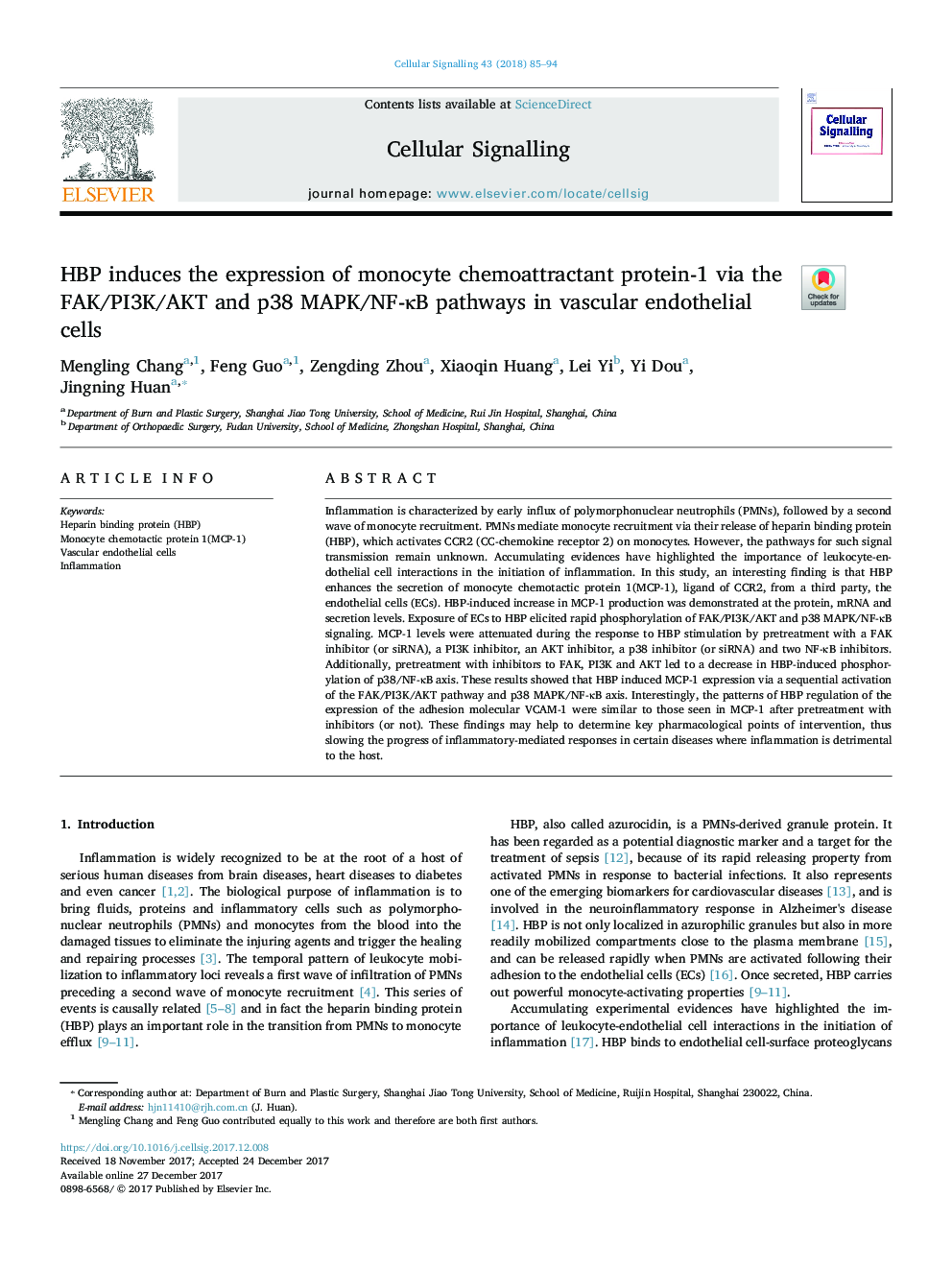| Article ID | Journal | Published Year | Pages | File Type |
|---|---|---|---|---|
| 8308987 | Cellular Signalling | 2018 | 10 Pages |
Abstract
Inflammation is characterized by early influx of polymorphonuclear neutrophils (PMNs), followed by a second wave of monocyte recruitment. PMNs mediate monocyte recruitment via their release of heparin binding protein (HBP), which activates CCR2 (CC-chemokine receptor 2) on monocytes. However, the pathways for such signal transmission remain unknown. Accumulating evidences have highlighted the importance of leukocyte-endothelial cell interactions in the initiation of inflammation. In this study, an interesting finding is that HBP enhances the secretion of monocyte chemotactic protein 1(MCP-1), ligand of CCR2, from a third party, the endothelial cells (ECs). HBP-induced increase in MCP-1 production was demonstrated at the protein, mRNA and secretion levels. Exposure of ECs to HBP elicited rapid phosphorylation of FAK/PI3K/AKT and p38 MAPK/NF-κB signaling. MCP-1 levels were attenuated during the response to HBP stimulation by pretreatment with a FAK inhibitor (or siRNA), a PI3K inhibitor, an AKT inhibitor, a p38 inhibitor (or siRNA) and two NF-κB inhibitors. Additionally, pretreatment with inhibitors to FAK, PI3K and AKT led to a decrease in HBP-induced phosphorylation of p38/NF-κB axis. These results showed that HBP induced MCP-1 expression via a sequential activation of the FAK/PI3K/AKT pathway and p38 MAPK/NF-κB axis. Interestingly, the patterns of HBP regulation of the expression of the adhesion molecular VCAM-1 were similar to those seen in MCP-1 after pretreatment with inhibitors (or not). These findings may help to determine key pharmacological points of intervention, thus slowing the progress of inflammatory-mediated responses in certain diseases where inflammation is detrimental to the host.
Related Topics
Life Sciences
Biochemistry, Genetics and Molecular Biology
Biochemistry
Authors
Mengling Chang, Feng Guo, Zengding Zhou, Xiaoqin Huang, Lei Yi, Yi Dou, Jingning Huan,
